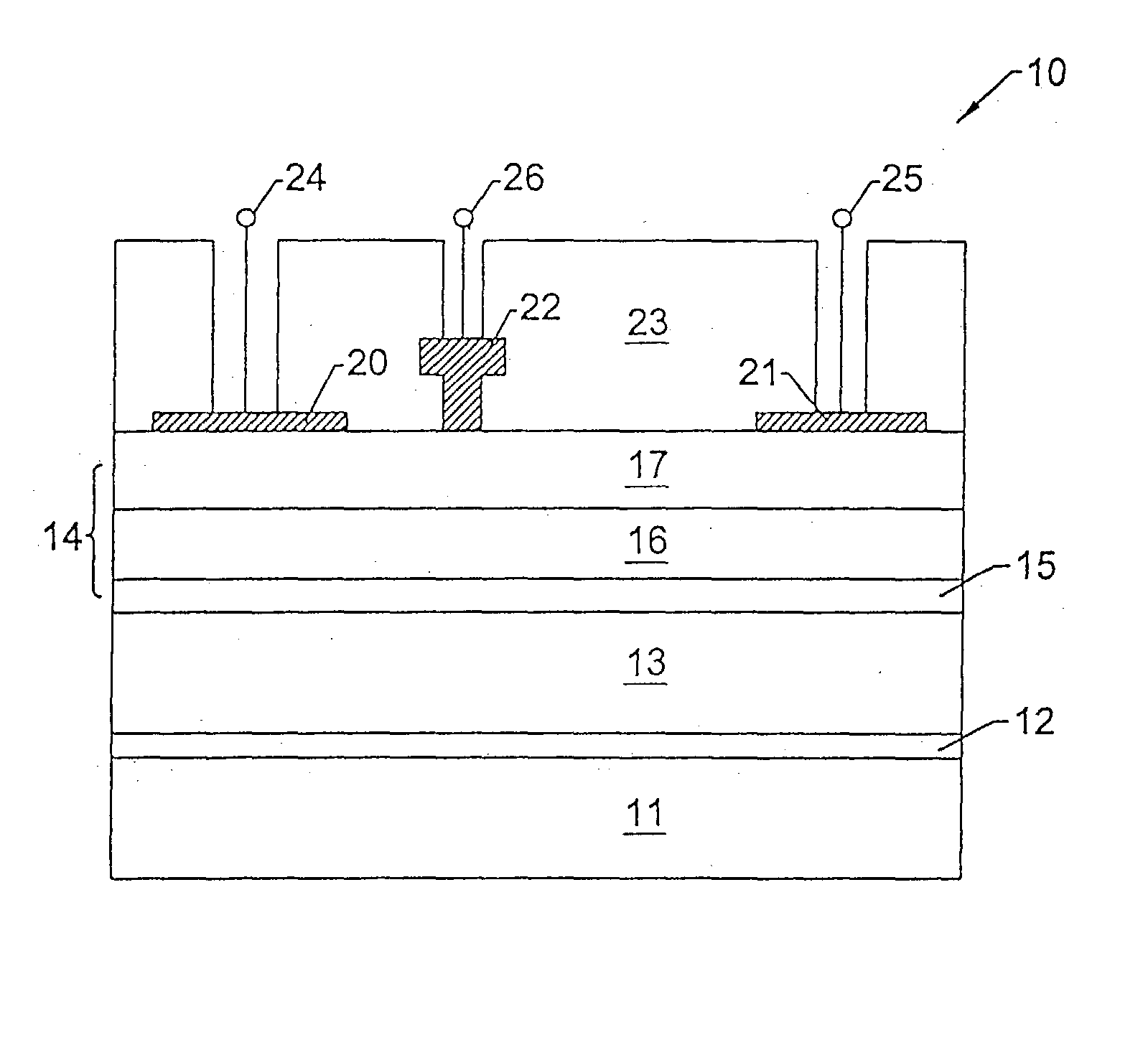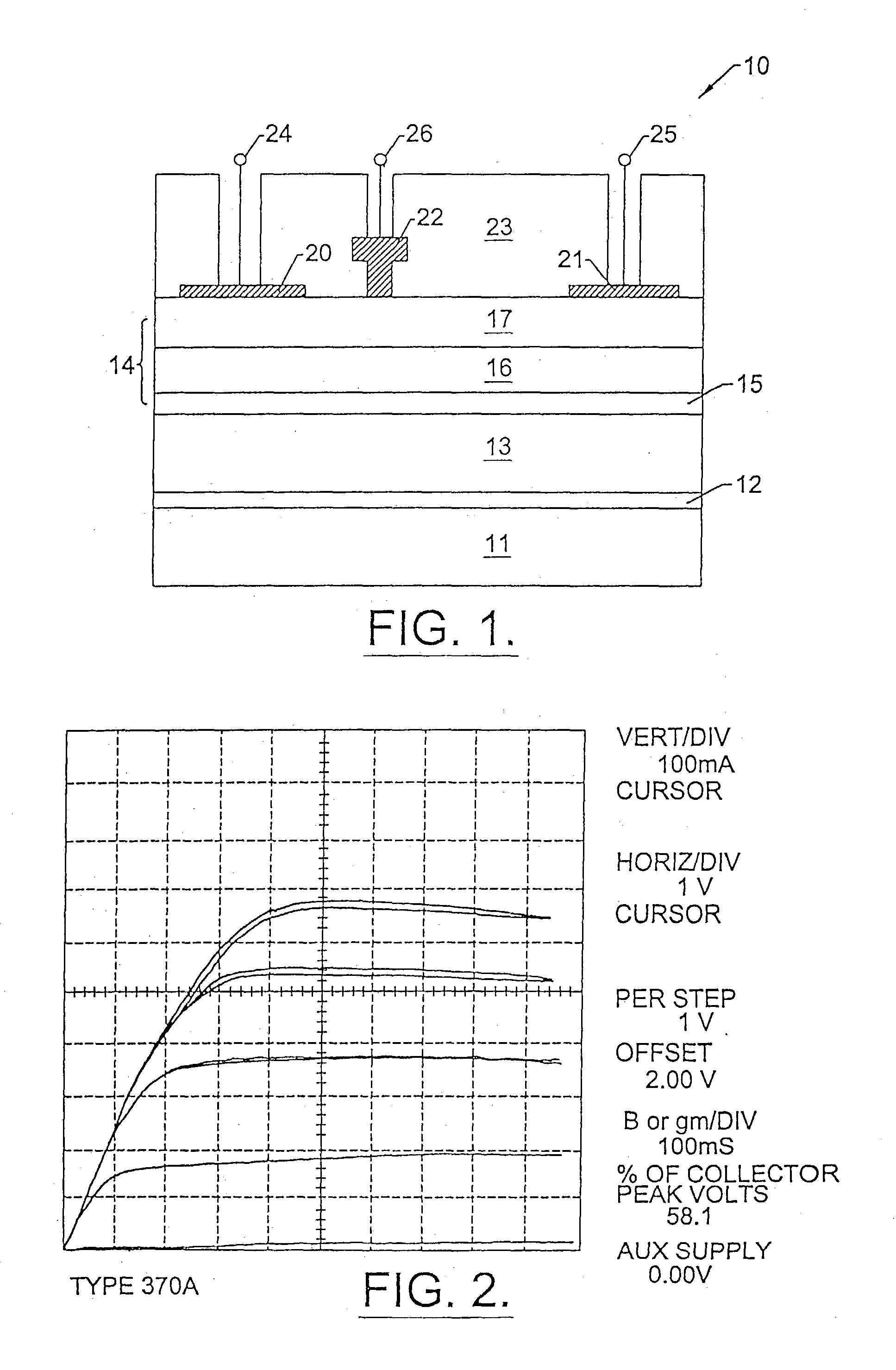Nitride based transistors on semi-insulating silicon carbide substrates
a silicon carbide substrate and nitride technology, applied in the direction of semiconductor devices, electrical equipment, basic electric elements, etc., can solve the problems that more familiar semiconductor materials have not been able to penetrate higher power high frequency applications to the extent desirable, and achieve the effect of high electron mobility
- Summary
- Abstract
- Description
- Claims
- Application Information
AI Technical Summary
Benefits of technology
Problems solved by technology
Method used
Image
Examples
Embodiment Construction
[0039] In the present invention, GaN / AlGaN HEMTs fabricated on semi-insulating 4H silicon carbide substrates have shown a total output power of 4 Watts CW (2.0 W / mm) at 10 GHz and -1 dB gain compression from a 2 mm gate width (16.times.125 .mu.m) with a power added efficiency of 29% and an associated gain of 10 dB. To date, this represents the highest total power and associated gain demonstrated for a III-Nitride HEMT at X-Band.
[0040] As shown in FIG. 1, the epilayer structure is comprised of an AlN Buffer Layer, 2 .mu.m of undoped GaN, and 27 nm of Al.sub.0.14Ga.sub.0.86N. The AlGaN cap has a 5 nm undoped spacer layer, a 12 nm donor layer, and a 10 nm undoped barrier layer. Device isolation was achieved with mesa etching. Ohmic contacts were Ti / Al / Ni contacts annealed at 900.degree. C. Across a 35 mm diameter SiC wafer, average values of contact resistance and sheet resistance were 0.36 .OMEGA.-mm and 652 .OMEGA. / square, respectively, showing the high quality of the 2DEG over a lar...
PUM
 Login to View More
Login to View More Abstract
Description
Claims
Application Information
 Login to View More
Login to View More - R&D
- Intellectual Property
- Life Sciences
- Materials
- Tech Scout
- Unparalleled Data Quality
- Higher Quality Content
- 60% Fewer Hallucinations
Browse by: Latest US Patents, China's latest patents, Technical Efficacy Thesaurus, Application Domain, Technology Topic, Popular Technical Reports.
© 2025 PatSnap. All rights reserved.Legal|Privacy policy|Modern Slavery Act Transparency Statement|Sitemap|About US| Contact US: help@patsnap.com



